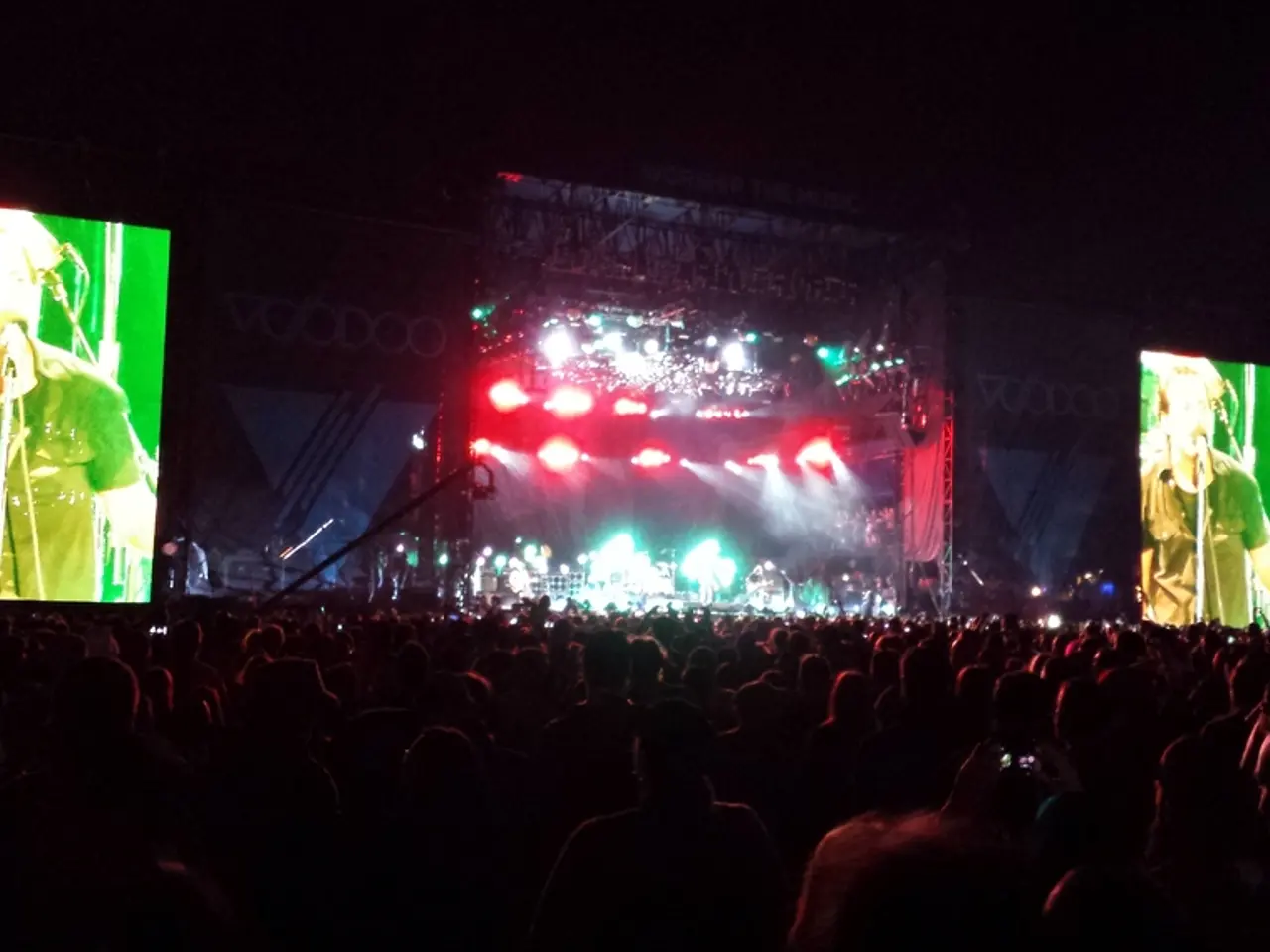Germany's Initiation to Fascism Via Hitler and the Nazi Party's Convincing Tactics
In the tumultuous political landscape of the Weimar Republic, the 1932 federal elections marked a pivotal moment in German history. On July 31, 1932, the German people, disillusioned and desperate, expressed their anger and distrust by casting their votes for the Nazi Party.
The elections of 1932 saw the Nazi Party, led by Adolf Hitler, gaining a significant seat in the German Reichstag. With nearly 14 million votes, the Nazi Party became the largest party in parliament, albeit without an absolute majority [1][3]. Their support was fueled by widespread economic distress and effective propaganda that capitalized on nationalist and antisemitic sentiments [1].
The Nazi Party's rise was facilitated by the fragmented political landscape of the Weimar Republic, where no single party could form a stable government. In state elections, such as Lübeck where they won 33.13% in November 1932, the Nazi Party's support continued to grow [1].
Hitler combined electoral success with alliance-building and intimidation tactics, exploiting his role as chancellor to consolidate power. After the Reichstag fire in February 1933, the Nazis used the 1933 elections to increase their vote share further to 44%, and then passed the Enabling Act, effectively giving Hitler dictatorial powers [1][2].
The Treaty of Versailles, signed at the end of World War I, placed full blame for the war on Germany and required them to pay reparations. The Nazi Party capitalized on this burden, promising to tear up the Treaty of Versailles, refuse to pay debts, and take back lost territory [2].
A significant event that further propelled the Nazi Party's rise was a corruption scandal in 1924 involving former Chancellor Gustav Bauer and the Jewish Barmat brothers merchants. This scandal fueled anti-Semitism and distrust in the government, making Hitler's ideas of racial superiority more appealing [2].
In summary, the Nazi Party leveraged large electoral gains in 1932 and political opportunity to have Hitler appointed Chancellor, which enabled them to consolidate and expand power beyond their electoral mandate. This set the stage for the establishment of a totalitarian regime, marking the beginning of Nazi control in Germany [1][3]. It's important to note that democracy in Germany died and fascism rose because the people voted for it, albeit with a significant number of Germans believing they were making the right choice [1].
Life in Nazi Germany was characterized by racial hatred and the suppression of democratic institutions. The rise of fascism and the absolute power of the Nazis was facilitated by a fire in the Reichstag, the death of a president, and a night of executions, but it all began with a democratic election in 1932 [2].
[1] Kershaw, Ian. "The Nazi Party: A History 1850-1966." Clarendon Press, 1998. [2] Evans, Richard J. "The Coming of the Third Reich." Penguin Books, 2003. [3] Bullock, Alan. "Hitler: A Study in Tyranny." Harper & Row, 1952.
History unfolded as the Nazi Party's electoral success in 1932 was integrated into policy-and-legislation, shaping the political landscape of Germany. The rise of the Nazi Party, which gained significant support due to economic distress and appeals to nationalism and antisemitism, was a response to the general-news events of the Weimar Republic, including the Treaty of Versailles and a corruption scandal in 1924.








